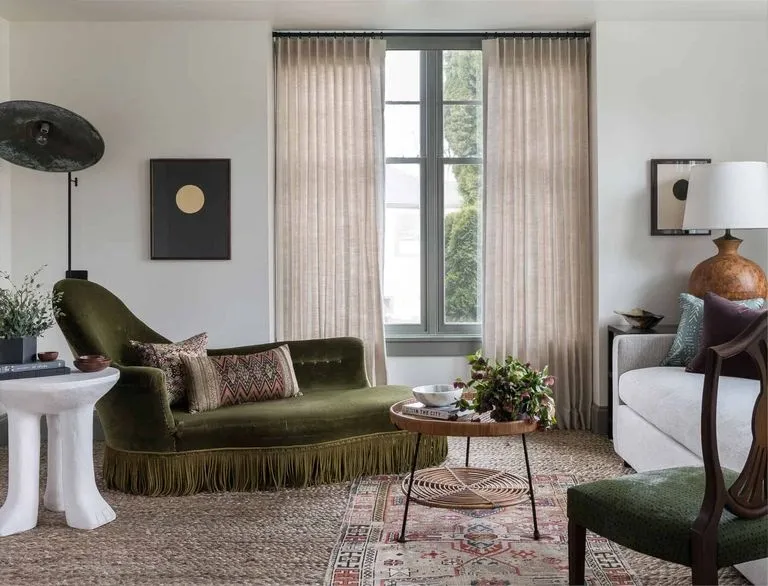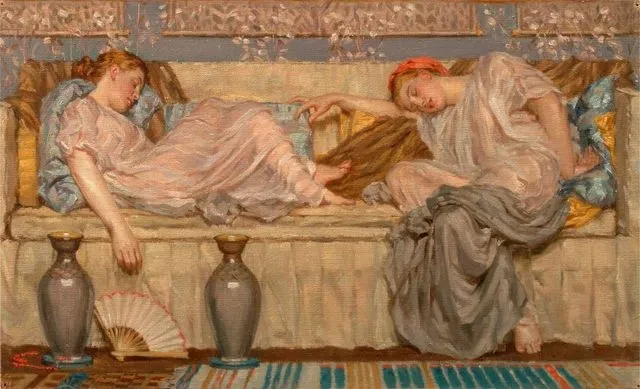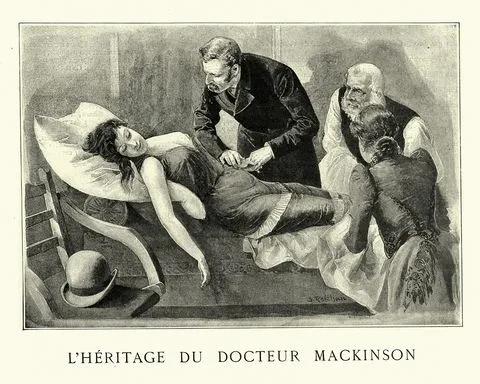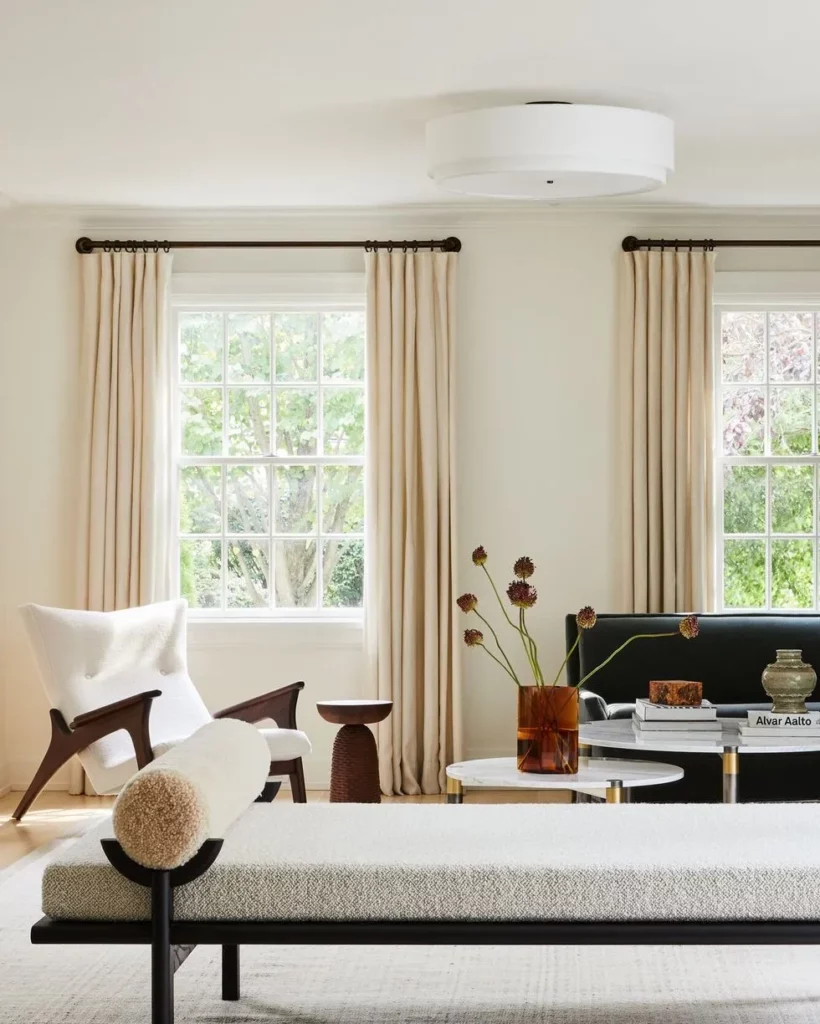If you, like me, have ever wondered at the meaning behind the dramatically-named “fainting couch,” you’re in right place. Though I’d seen it plenty of times before—like on the chic set of Sofia Coppola’s Marie Antoinette depicticting a histrionic patient displaying delusions of grandeur in their psychotherapist’s office, as she fell onto an imaginary “fainting couch.”
If this merging of historic misogyny, psychoanalysis, and interior design has you fascinated, keep reading: Ahead, we dive into the history behind this controversially-named furniture item, then explore designer examples of the enduring piece of furniture
So what is a fainting couch, anyway?

A fainting couch is really just an iteration of the daybed. Today, many use it interchangeably with settees and chaises, though there are some distinctions. Often bearing elaborate carvings and a bodacious silhouette, the fainting couch is distinct from other types of daybeds because of its frame: It’s usually shorter in length than a standard sofa and the back and arms only extend to one side of the seat. If you look at the contours of the fainting couch, it really does seem like the perfect place to just fall onto and rest, but whether or not it was actually designed to catch a person fainting is up for debate. So let’s rewind a little to get to the bottom of the fainting association…
The story behind the name

Popularized in the west during the Regency and Victorian era, but dating back centuries prior, fainting couches are associated with a few different myths. According to historians, reclining furniture probably actually existed as far back as the 7th century BC (which you can see examples of if you Google ancient Greek and Roman drawings). But it didn’t really take off until the 1800s, and this is when the fainting sofa got its infamous name, likely because wealthy women had a separate room for lounging, resting, grooming, dressing, and… fainting?
Specifically, studies done on the period found that elite Victorian women regularly fainted because their corsets were too tight. These studies actually revealed that corsets “disrupted the natural lung capacity from 2 percent to 29 percent,” according to The Corset: A Cultural History by Valerie Steele (they also made it difficult to eat a sufficient meal). So, understandably, the corseted women often felt short of breath and light-headed, so lying down and relaxing was advised. Since the corsets weren’t going anywhere and because it was believed to be improper to lay in a bed once it was made up for the day, dedicated rooms with daybeds were created to give ever-swooning women a place to rest and lounge, should they fall and need to do so elegantly.
Freudian Days

Right as Sigmund Freud emerged at the turn of the century, it was common for women to be diagnosed as hysteric (a catchall phrase for anything thought by men to be unmanageable about women). As reported in academic research and primary documents (see examples here and here), the accepted treatment plan of choice, for those who could afford it, was even more disturbing and unethical: Frequently, women would be instructed to go to their “fainting rooms” and rest on the sofa.
The fainting couch came onto the Freudian scene in other ways, too. Specifically, Freud and his contemporaries would have their patients lie on similar daybeds so they could relax and reach a meditative, almost unconscious state while recounting their earliest memories, stream of consciousness thoughts, and dreams. Because the fainting couch had been so coded as feminine (read: fragile), this form of therapy also inherited the same stereotypes—you know us gals, lazy lovers of lounging with the gift of gab and always so faint of heart. So while the style of chaise known as the fainting couch wasn’t invented alongside expensive corsets and therapy, they became intrinsically linked.
Daybeds, settees, chaises, and fainting couches today

While these perches (luckily) aren’t exclusively used for fainting today, they have endured in contemporary interior design settings. And it’s a good thing, because fainting couches are really pretty and really comfortable, so I’m all for reclaiming them (in an interesting fashion parallel, modern, less stifling interpretations of the corset are also back in style). These asymmetrical seats are often incorporated to add some whimsical antique charm as a nod to the past in eclectic spaces—and you might even still find them in a therapist’s office.
Contemporary takes on the fainting couch feature fewer intricacies and usually just have a single back with two rolled arms or no arms at all so you can stretch your legs and relax as well as recline a tiny bit while being upright enough to stay awake. They’re a lovely accent in an empty corner as well as a good way to break up a large space with multiple sitting areas as they’re not as bulky as larger sofas thanks to a lower profile.
By Hadley Mendelsohn for House Beautiful, 1/6/2022
Original Article HERE
For more information, please contact us here.



